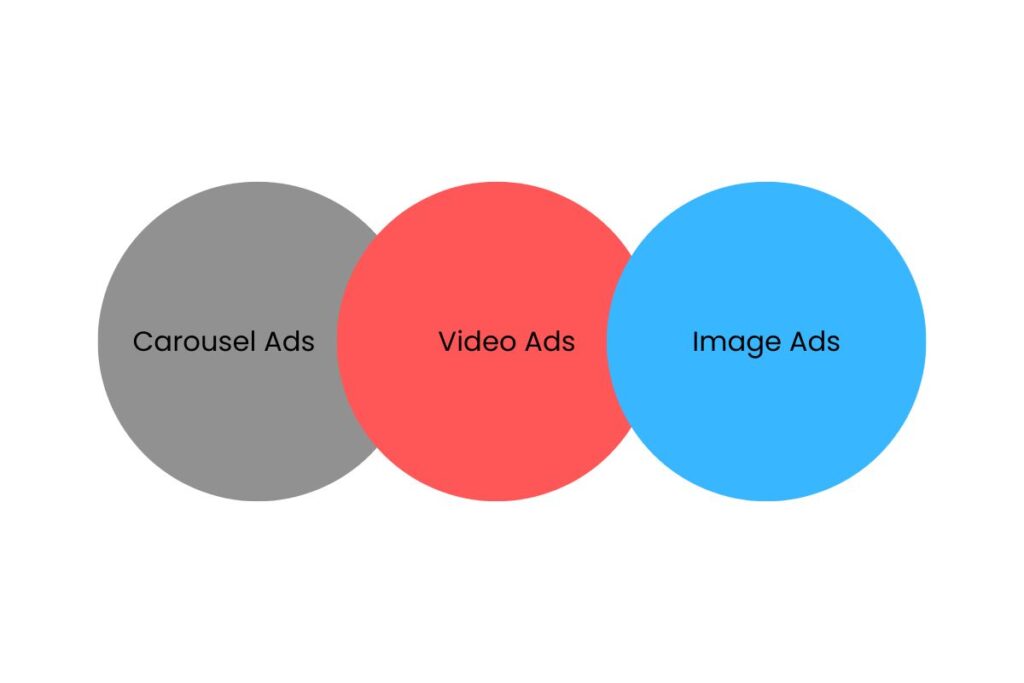
If you’ve ever run Meta Ads, you’ve probably asked yourself the same question I have many times:
Which ad format actually delivers the best results — carousel, video, or image?
Each format has its own strengths. The real answer depends on your goals, audience, and where your customer is in the funnel.
After years of testing, here’s what I’ve learned.
Quick Comparison Table : Carousel Ads vs. Video Ads vs. Image Ads
| Criteria | Carousel Ads | Video Ads | Image Ads |
|---|---|---|---|
| Best For | Storytelling, product showcases, multi-step journeys | Grabbing attention, building emotion, brand awareness | Quick promotions, retargeting, conversions |
| Content Type | Multiple images or videos (swipeable cards) | Motion visuals with sound and captions | Single static visual |
| Goal Alignment | Middle of the funnel (education & engagement) | Top of the funnel (awareness & attention) | Bottom of the funnel (conversion & action) |
| Engagement Level | High – interactive and swipe-driven | Very high – immersive and emotional | Moderate – simple and direct |
| Cost Efficiency | Moderate | Higher (due to production) | Lower |
| Creative Flexibility | Great for storytelling or showing features | Excellent for demonstrations or emotional hooks | Ideal for clarity and focus |
| Performance Strength | Higher CTR, longer engagement time | Strong reach and brand recall | Lower CPA in retargeting campaigns |
| Weakness | Can be ignored if first card isn’t catchy | Requires good editing and strong hooks | Can look “boring” if not well-designed |
| Example Use Case | Showcasing product range or service steps | Product demo or brand story video | Retargeting ad with discount or clear CTA |
Carousel Ads: Perfect for Storytelling and Depth
When I need to explain something step-by-step or show multiple products, carousel ads are my go-to.
They allow users to swipe through a sequence of visuals — making them ideal for storytelling, feature breakdowns, or showcasing collections.
Carousels work best for:
- Product launches
- Before-and-after showcases
- Testimonials or customer journeys
- Feature highlights
They encourage interaction, which improves engagement signals to Meta’s algorithm — helping you reach more qualified users.
Pro tip: Make the first card eye-catching. The first impression decides if people will swipe or scroll past.
Video Ads: Best for Attention and Emotional Impact
If your goal is to connect emotionally and grab attention instantly, video ads are unbeatable.
They allow you to tell your story with sound, visuals, and movement — which triggers stronger emotional responses.
Short-form videos (under 15 seconds) perform best for awareness.
Longer videos (30–60 seconds) are better for storytelling or product explanation.
Use video ads when you want to:
- Launch a new product
- Demonstrate usage or benefits
- Build brand trust
Pro tip:
Start strong in the first three seconds — hook attention fast.
Avoid long intros or logo screens; lead with curiosity, emotion, or a direct problem-solution moment.
Also, always add captions — many users scroll with sound off.
Image Ads: Simple, Fast, and Conversion-Focused
When simplicity is the goal, image ads do the job perfectly.
They’re ideal for retargeting campaigns or limited-time offers where you want quick action.
I use image ads for:
- Retargeting visitors who viewed products
- Announcing flash sales or discounts
- Driving direct landing page traffic
They load fast and perform well for warm audiences.
Pro tip:
Use clean design, short copy, and high contrast.
Your image should speak louder than your text.
The Real Secret: Combine All Three
Instead of choosing one, I recommend using all three formats strategically across your funnel.
| Funnel Stage | Recommended Ad Format | Objective |
|---|---|---|
| Awareness | Video Ads | Capture attention and introduce your brand |
| Consideration | Carousel Ads | Educate and build interest through storytelling |
| Conversion | Image Ads | Drive immediate action or purchase |
This mix keeps your audience engaged at every step — from discovery to decision.
Common Mistakes to Avoid
- Using video ads with no clear hook or caption
- Overloading carousel cards with too much text
- Treating image ads like posters instead of conversion tools
- Not testing different ad formats with the same audience
Remember: testing beats guessing.
Even the most beautiful creative won’t perform if it doesn’t match your goal or audience stage.
Final Thoughts
So, what works best — Carousel, Video, or Image Ads?
All of them do — but for different reasons.
- Video ads win for awareness and storytelling.
- Carousel ads win for engagement and education.
- Image ads win for conversion and clarity.
If you combine them smartly, you’ll create a full-funnel system that doesn’t just attract clicks — it drives real business results.
Because in Meta Ads, it’s never about the format alone.
It’s about the strategy behind how you use it.
